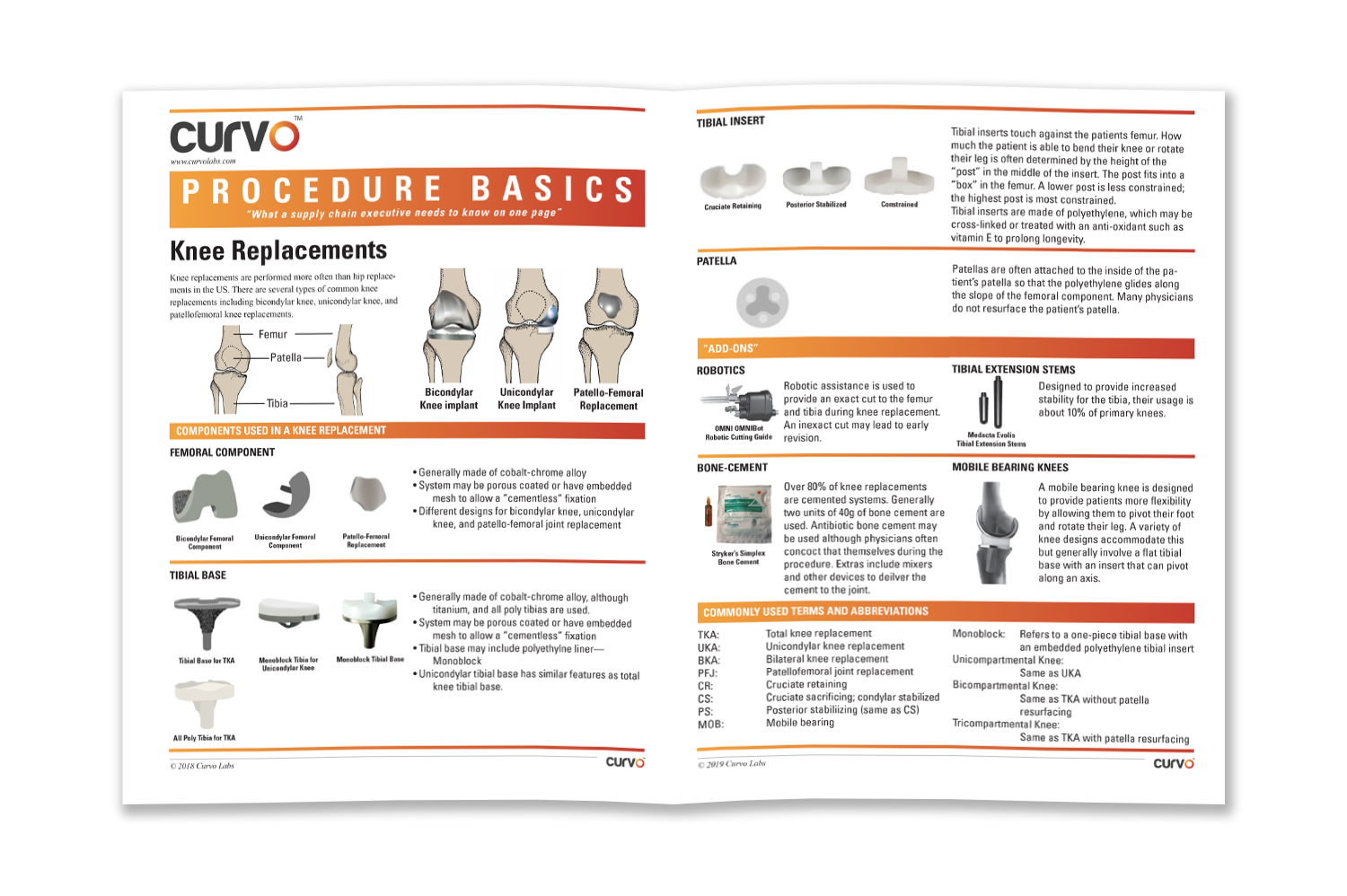
Knee replacements are performed more often than hip replacements in the US. There are several types of common knee replacements including bicondylar knee, unicondylar knee, and patellofemoral knee replacements.
What to Know about Knee Replacement Procedure Basics
Use this information to build a basic understanding of what is involved in knee replacement procedures.
Femoral Component
- Generally made of cobalt-chrome alloy
- System may be porous coated or have embedded mesh to allow a “cementless” fixation
- Different designs for bicondylar knee, unicondylar knee, and patello-femoral joint replacement
Tibial Base
- Generally made of cobalt-chrome alloy, although titanium, and all poly tibias are used.
- System may be porous coated or have embedded mesh to allow a “cementless” fixation
- Tibial base may include polyethylene liner—Monoblock
- Unicondylar tibial base has similar features as total knee tibial base.
Tibial Insert
Tibial inserts touch against the patient's femur. How much the patient is able to bend their knee or rotate their leg is often determined by the height of the “post” in the middle of the insert. The post fits into a “box” in the femur. A lower post is less constrained; the highest post is most constrained.
Tibial inserts are made of polyethylene, which may be cross-linked or treated with an anti-oxidant such as vitamin E to prolong longevity.
Patella
Patellas are often attached to the inside of the patient’s patella so that the polyethylene glides along the slope of the femoral component. Many physicians do not resurface the patient’s patella.
Knee Replacement Procedure “Add Ons”
Robotics
Robotic assistance is used to provide an exact cut to the femur and tibia during knee replacement. An inexact cut may lead to early revision.
Tibial Extension Stems
Designed to provide increased stability for the tibia, their usage is about 10% of primary knees.
Bone Cement
Over 80% of knee replacements are cemented systems. Generally two units of 40g of bone cement are used. Antibiotic bone cement may be used although physicians often concoct that themselves during the procedure. Extras include mixers and other devices to deliver the cement to the joint.
Mobile-Bearing Knees
A mobile-bearing knee is designed to provide patients more flexibility by allowing them to pivot their foot and rotate their leg. A variety of knee designs accommodate this, but it generally involves a flat tibial base with an insert that can pivot along an axis.
Common Terms and Abbreviations in Knee Replacement Procedures
- TKA: Total knee replacement
- UKA: Unicondylar knee replacement
- BKA: Bilateral knee replacement
- PFJ: Patellofemoral joint replacement
- CR: Cruciate retaining
- CS: Cruciate sacrificing; condylar stabilized
- PS: Posterior stabilizing (same as CS)
- MOB: Mobile bearing
- Monoblock: Refers to a one-piece tibial base with an embedded polyethylene tibial insert
- Unicompartmental Knee: Same as UKA
- Bicompartmental Knee: Same as TKA without patella resurfacing
- Tricompartmental Knee: Same as TKA with patella resurfacing
Get the full Procedure Brief on Knee Replacement Procedures.

